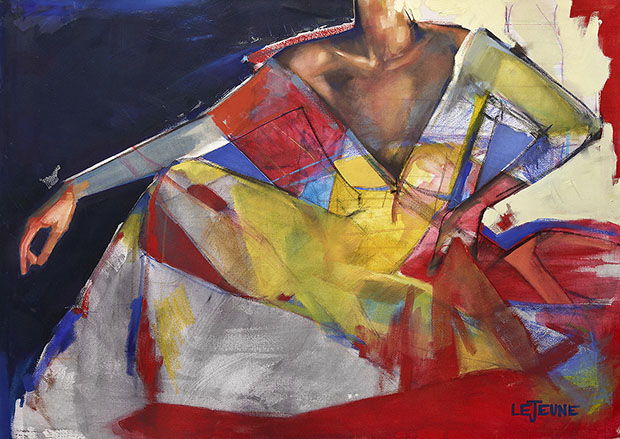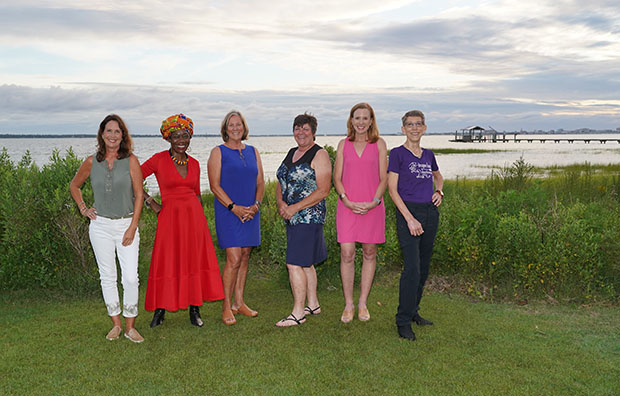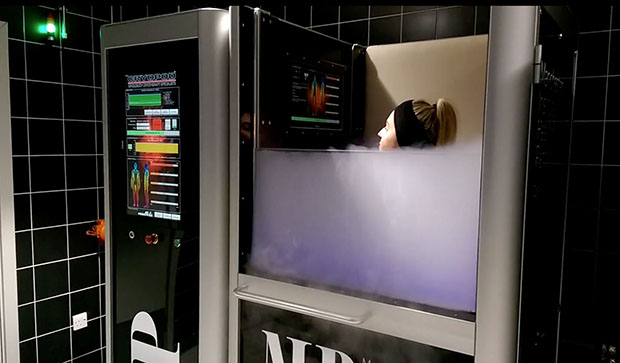Beauty, Power & Strength
04 Jul 2020
Artist Whitney Lejeune captures the shape of the female form
By Teri Errico Griffis

Charleston-based artist Whitney LeJeune doesn’t recall a specific moment when she fell in love with art; she has always been passionate about painting and creating. As a child she took extracurricular art classes and as a teen was inspired by artists at Savannah College of Art and Design (SCAD).
She knew her future wouldn’t be easy an artist, but it was the only career she could imagine. Today, she successfully showcases her paintings of the female form throughout South Carolina and has a collaboration that places her original artwork on wine bottles throughout the country.
“I was in high school when I really became serious about art and learned it could be a career possibility. Someone from SCAD came to speak to my AP art class and I was like, ‘Oh my God! Being an artist is a real thing!’” she recalls with a laugh. “For me, it was everything to see the reality that you could actually be an artist and find success in it if you worked hard.”
It was a walk with her father during that time that cemented her future trajectory. While she doesn’t feel she was a standout at a young age, the support of her family and teachers mixed with her passion pushed her onward.
“We took a walk around the block and my dad told me it wouldn’t be easy. As an artist, you don’t graduate and just get a job. You’d have to figure out everything on your own and won’t be guaranteed a paycheck. It was scary,” LeJeune said. “But I was willing to make the commitment.”
As she’s grown as an artist, LeJeune’s focus has remained steady, gravitating toward the female figure and form. She uses it as a vehicle, concentrating on the shape and form of the overall composition, rather than the realistic puzzle.
“It’s a subject I know best. The female figure is the universal symbol of beauty, of power and strength. Everything about it deserves to be celebrated,” she said. “I start with the form and create a puzzle. I don’t study or make sketches and translate it. The first thing I do is put something on the canvas and mess it up so it’s not intimidating.”
From there, she paints in stages, using oil and turning her canvas upside down again and again, trying hard not to make art that’s “too pretty.” Sometimes she incorporates actual fabrics for dresses—in particular using scraps from her basket of old paint rags. “What happens then are unintended miracles on canvas,” she describes. “It’s this very organic texture and color palette. It’s built from the paint of 30 different paintings. It’s worn with unexpected contrasts.”
LeJeune primarily paints with oil, although she only used acrylic in the beginning—a “totally different breed.”
“Now it’s night and day. I’d never switch back,” she said.
Like so many artists in today’s climate, LeJeune’s work is mainly online these days, but you can still spot her paintings at the Queen Street Playhouse, as well as a unique collaboration printing art on wine bottles at local joints like Graft, Edmond’s Oast, Husk and more.
Following an introduction at one of LeJeune’s shows, California winemaker Nathan DeCamps—a Charlestonian originally—partnered with the artist to create artwork for his wine labels. Each wine produced features an original oil painting by Lejeune, custom-created to represent the unique notes and body of the grape. They’ve collaborated on 13 bottles so far and couldn’t be happier to see the people in their favorite city “enjoying both our crafts by eye and palate.”
“It’s been wild and one of the coolest projects I’ve been a part of,” LeJeune said. “Nathan is so passionate about his craft of winemaking, down to every idea from the glass bottle to the cork.”
Since buyers view the bottle before tasting the wine, DeCamps sought to attract with something bold and beautiful.
“He explained each particular grape, each note and how it tastes. He concentrated on the personality and color,” said LeJeune. “He’d send me pictures of the wine and I would look at it, study it and discuss it. I then created a figure of what we thought expressed the wine on the inside.”
The result is even more incredible representations of the female form. “It’s what I know best and I like to really represent the form with respect and dignity,” she said. "Where is it that the mind can stroll, in absolute harmony with the heart and soul? Art."
For more information or to view additional work, visit http://www.whitneylejeune.com











